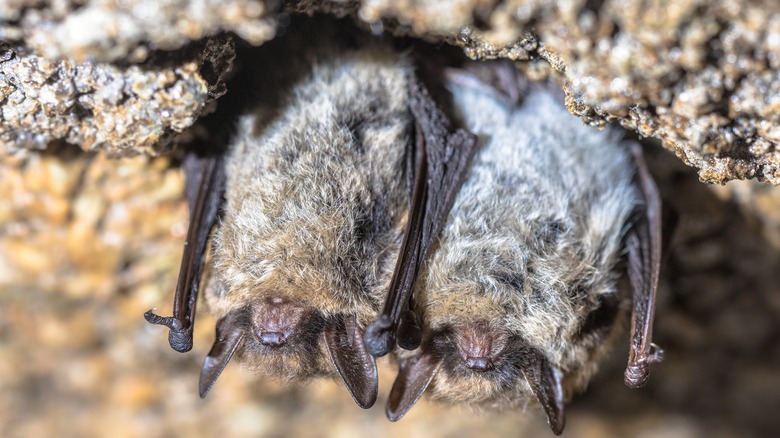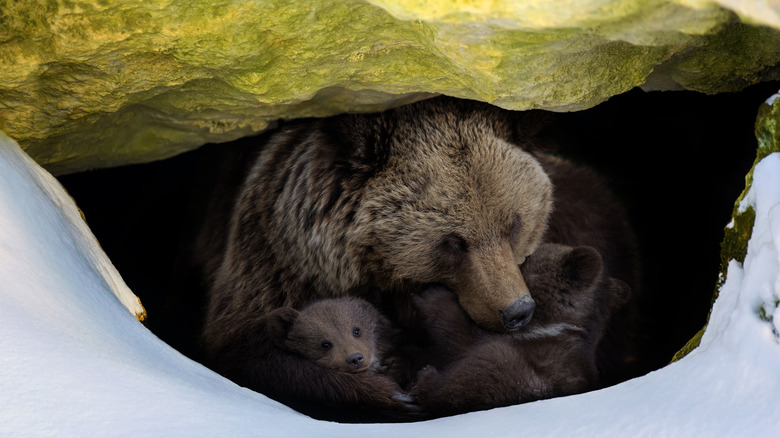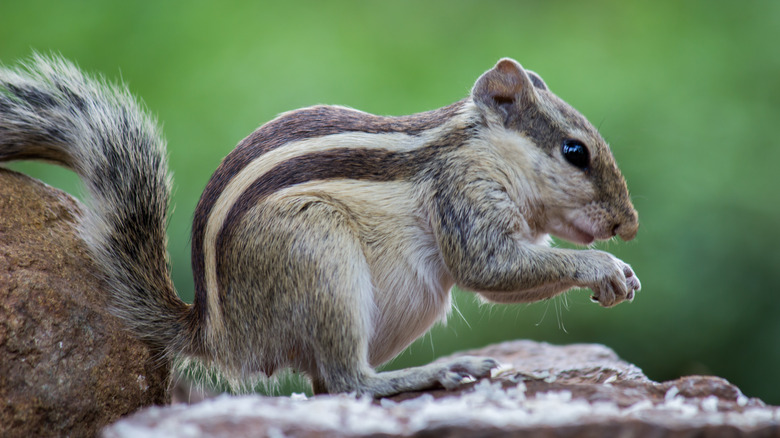How Do Hibernating Animals Know When To Wake Up?
Sleep is a curious thing. Millions around the world would agree that we just don't get enough of it. The facts would seem to support this bleary-eyed view, too. According to the Sleep Foundation, adults between the ages of 23 and 64 should be enjoying between seven and nine hours of sleep every night, while adults above that age should aim for a slightly different sweet spot of seven to eight hours.
For the serial procrastinators, night owls and late-night social media scrollers among us, though, this can seem an impossible dream at times. This may well contribute to the sobering findings of a May 2020 RestoreZ survey, which concluded that 65% of 2,000 U.S. participants "rarely wake up feeling rested and energized."
According to the website, this has a negative impact on factors like mood and work productivity. It's enough to make us humans wish we could shuffle off and hibernate for an actual, meaningful rest, like some of our friends in the animal kingdom. It's one thing to hibernate; it's another to wake up. Which raises the question: How do hibernating animals know when to rise and shine after a long winter's nap?
Bears don't technically hibernate
Hibernation is a state that goes a little beyond a desire to remain in a snug, warm bed on a chilly winter morning. Millions of us have indulged in that, and we've all been roused by some pesky responsibility or other before too long. Some animals, however, take their avoidance of the perils of winter to drastic lengths.
As Britannica reports, hibernators are able to gradually lower their body temperature and the rate of their metabolism. While hibernating, their bodies are at around 32 degrees Fahrenheit (zero degrees Celsius), and their breathing and heart rate slows dramatically. Curiously, these temperature changes are not as dramatic among bears and some other mammalian species as they are in certain fish and cold-blooded animals, and so they are not technically classed as hibernating in the strictest sense.
The National Forest Foundation differentiates between entering a state of torpor, a kind of hibernation-lite, and true hibernation. In the former, animals can wake quickly when sensing prey or a threat, as they usually would, and the effects on their bodies are less severe. Awakening from full hibernation, on the other hand, typically requires a little help from the very power hibernating animals are sheltering from: nature itself.
The weather and the thalamus awaken hibernators
Per CBS Minnesota, the warming weather that arrives with the spring rouses a lot of hibernators. The Minnesota Department of Natural Resources' Lori Naumann told CBS that hibernating snakes awake as the weather warms up and the fat they had built up in their bodies to tide them over is used up.
"Some animals, it is temperature dependent and it's weather and daylight dependent," Naumann said, citing the snakes as an example of this, "but other animals, it's hormonal." Ground squirrels, the expert goes on, are an example of creatures whose hibernation is governed by the thalamus of the brain. These critters, if liberated early from the cold ground, "wouldn't wake up at all," Naumann concluded.
The thalamus, Cleveland Clinic reports, is a vital structure in the center of our brain. It routes the information gathered by our senses (though not smells) and sends it where it needs to go. Damage to the thalamus can reportedly, among other things, cause insomnia and affect the conscious state in other ways, as it also have a tremendous influence on sleeping and waking. It's no surprise, then, that some hibernating animals are completely reliant upon it on order to wake up.


